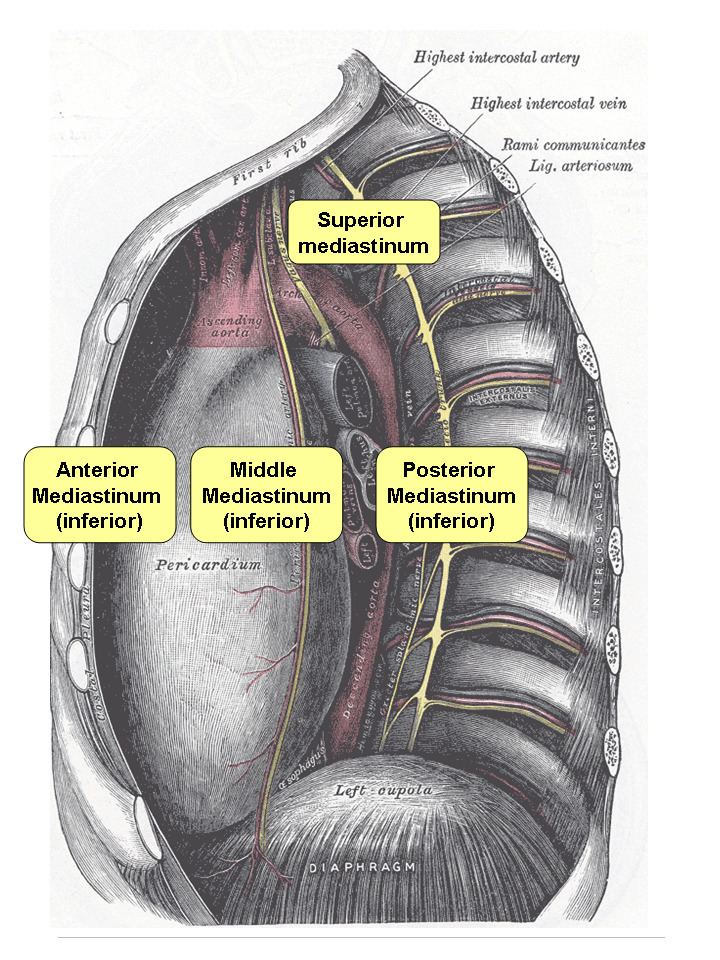Latin mediastinus TA A07.1.02.101 | Dorlands/Elsevier m_06/12518945 FMA 9826 | |
 | ||
The mediastinum (from Medieval Latin mediastinus, "midway") is the central compartment of the thoracic cavity surrounded by loose connective tissue, as an undelineated region that contains a group of structures within the thorax. The mediastinum contains the heart and its vessels, the esophagus, trachea, phrenic and cardiac nerves, the thoracic duct, thymus and lymph nodes of the central chest.
Contents
Structure
The mediastinum lies within the thorax and is enclosed on the right and left by pleurae. It is surrounded by the chest wall in front, the lungs to the sides and the spine at the back. It extends from the sternum in front to the vertebral column behind, and contains all the organs of the thorax except the lungs. It is continuous with the loose connective tissue of the neck.
The mediastinum can be divided into an upper (or superior) and lower (or inferior) part:
Anatomists, surgeons, and clinical radiologists compartmentalize the mediastinum differently. For instance, in the radiological scheme of Felson, there are only three compartments (anterior, middle, and posterior), and the heart is part of the anterior mediastinum.
Superior mediastinum
The superior mediastinum is bounded:
Thoracic plane
A number of structures occur at the level of the thoracic plane, which divides the superior and inferior mediastinum:
compiled by
Inferior mediastinum
Is bounded:
